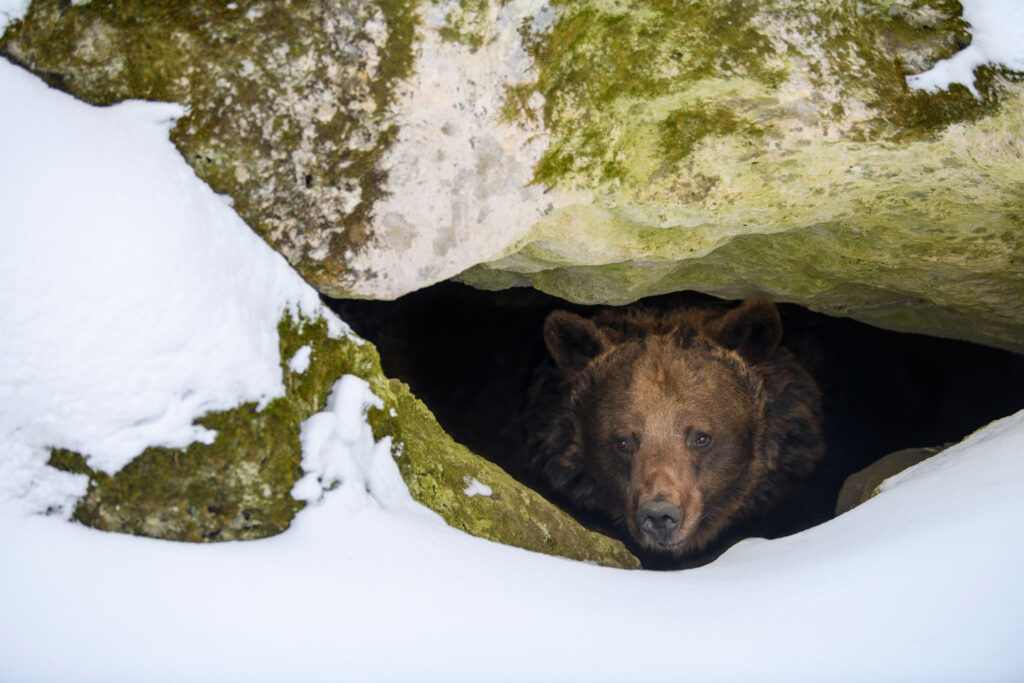Each Fall, colder temperatures and less available food trigger both grizzly and black bears to search for suitable winter den sites in the winter. In Yellowstone, bears typically choose den sites on north-facing, 30-60 degree slopes between 6,500 – 10,000 feet in elevation. According to Yellowstone National Park, this den site location keeps bears insulated, as snow accumulates on these slopes from prevailing southwest winds. The den entrance is just large enough to enter. A small space means less heat escapes and it takes less energy for the bear to stay warm!
The following 5 month winter period of decreased activity, lowered heart rate and body temperature, and deep sleep is called hibernation. During hibernation, bears’ decreased metabolic rate allows them to use less energy while they use stored fats and proteins to survive the winter. Bears’ heart rate can decrease from 50 beats per minute in the summer to 12 beats per minute during hibernation! They can also convert what would otherwise be toxic byproducts into useful energy. For example, during hibernation, urea (a compound in urine) is broken down into nitrogen compounds to become a protein, which can then be used to maintain muscles and organs! (Yellowstone Forever)
The first black bear and grizzly bear emerged in Yellowstone early this March! Yellowstone’s male grizzlies (boars) typically emerge from hibernation first, in the first weeks of March. Females (sows) with cubs generally wake up a little later, in April and May. Farther south, in Grand Teton National Park, the first grizzlies are usually spotted in late March and April.
After emerging from a winter of hibernation, bears spend about two weeks in a groggy state. In Yellowstone, grizzly bears may scavenge for winter-killed ungulates (hoofed animals like elk and bison), early spring plants such as grasses and dandelions, and even root caches left behind by pocket gophers. During this time in early spring, bears frequent thermal areas like Old Faithful that are the first to be snow-free, making food more easily accessible (Kerry Gunther, Bear Biologist, Yellowstone National Park).
Wildlife Expeditions and the National Park Service encourage visitors to be bear-aware. Remember to always view bears from at least 100 yards away, carry bear spray when hiking, use bear-proof trash cans to dispose of waste, and never feed wildlife. Ready to search the hillsides and sage flats for a grizzly sow and cubs? Our industry-leading guides have over 100 years of combined experience and are excited to take you on an educational exploration of Grand Teton and Yellowstone National Parks. Book a tour with Wildlife Expeditions today for your chance to spot bears this spring!


